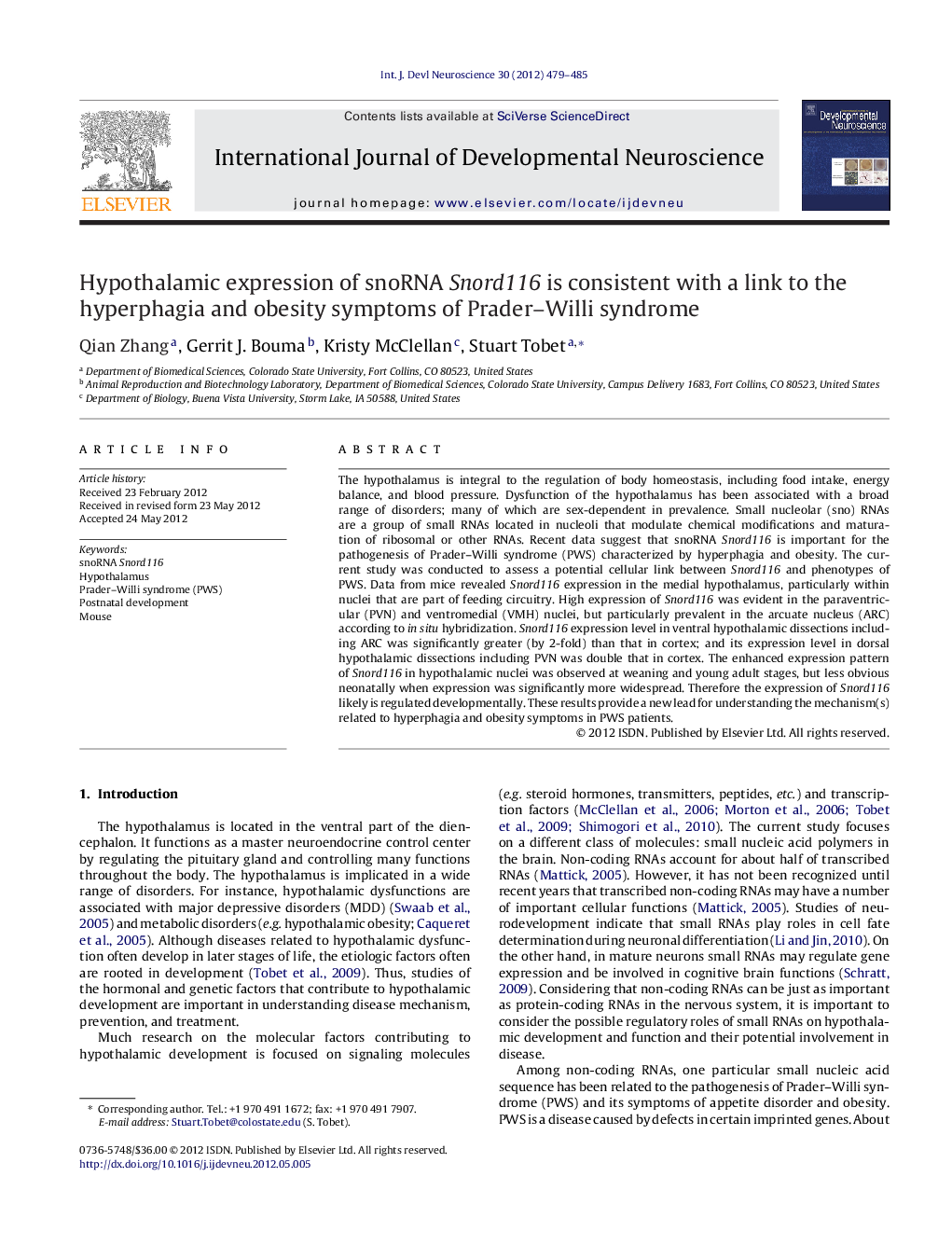| Article ID | Journal | Published Year | Pages | File Type |
|---|---|---|---|---|
| 2786218 | International Journal of Developmental Neuroscience | 2012 | 7 Pages |
The hypothalamus is integral to the regulation of body homeostasis, including food intake, energy balance, and blood pressure. Dysfunction of the hypothalamus has been associated with a broad range of disorders; many of which are sex-dependent in prevalence. Small nucleolar (sno) RNAs are a group of small RNAs located in nucleoli that modulate chemical modifications and maturation of ribosomal or other RNAs. Recent data suggest that snoRNA Snord116 is important for the pathogenesis of Prader–Willi syndrome (PWS) characterized by hyperphagia and obesity. The current study was conducted to assess a potential cellular link between Snord116 and phenotypes of PWS. Data from mice revealed Snord116 expression in the medial hypothalamus, particularly within nuclei that are part of feeding circuitry. High expression of Snord116 was evident in the paraventricular (PVN) and ventromedial (VMH) nuclei, but particularly prevalent in the arcuate nucleus (ARC) according to in situ hybridization. Snord116 expression level in ventral hypothalamic dissections including ARC was significantly greater (by 2-fold) than that in cortex; and its expression level in dorsal hypothalamic dissections including PVN was double that in cortex. The enhanced expression pattern of Snord116 in hypothalamic nuclei was observed at weaning and young adult stages, but less obvious neonatally when expression was significantly more widespread. Therefore the expression of Snord116 likely is regulated developmentally. These results provide a new lead for understanding the mechanism(s) related to hyperphagia and obesity symptoms in PWS patients.
► The expression of snoRNA Snord116 was examined in perinatal, weaning age and young adult mouse brain by in situ hybridization and qPCR. ► Snord116 expression in weaning and adult mice is prominent in the medial hypothalamus, particularly within nuclei that are part of feeding circuitry. ► This prominent expression pattern of Snord116 was observed in adult but not in newborn, indicating it was developmentally regulated. ► The result provides a link between Snord116 expression and PWS phenotypes at a cellular level.
